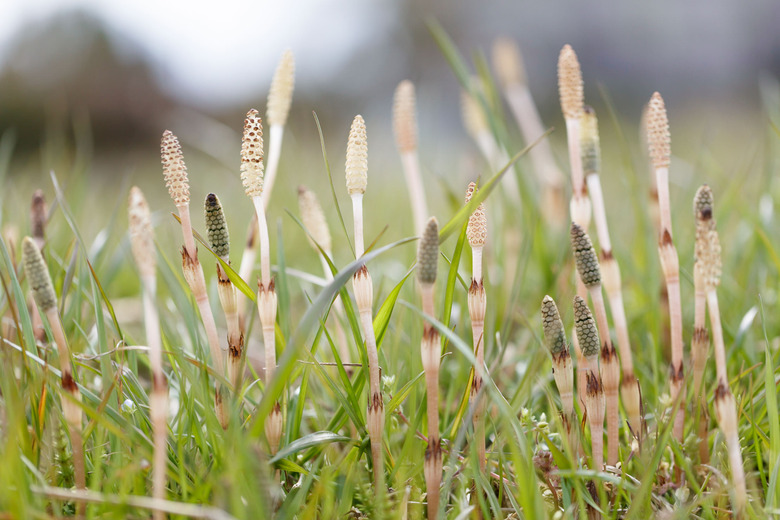How To Kill Snake Grass
Snake grass (Equisetum spp.) is a tenacious weed that shares with ferns the ability to spread using spores. Snake grass typically grows on poorly drained soil where there is less competition from other plants. Also known by the common name of horsetail, snake grass is extremely difficult to remove after it becomes established.
Tilling the Soil
Tilling the Soil
An established stand of snake grass produces an extensive system of roots and underground stems known as rhizomes that can reach up to 6 feet below the surface. These roots can send up new shoots after existing stems above ground are cut down to the ground many times, even after the ground is tilled.
Tilling does use up some of the nutrients stored in the roots, but it also encourages more shoots to regrow from the severed roots and rhizomes, creating a denser stand of choke weeds than before without eliminating the deep root system. Tilling is best used in conjunction with regular mowing to deplete the root system's energy reserves while preventing it from spreading above ground.
Mowing Down Snake Grass
Mowing Down Snake Grass
Regular mowing removes snake grass from the yard or garden and prevents it from replenishing the nutrient reserves in its root system. Mowing also prevents the plant from releasing spores and spreading to other areas. Mowing or cutting down snake grass is only effective when the plants are cut regularly on a monthly basis.
In most cases, mowing will not completely kill this weed in less than one growing season; the exact amount of time required to completely kill snake grass depends on the size of the plants, their health and local conditions.
Controlling Snake Grass
Controlling Snake Grass
Snake grass spreads slowly compared to regular grass, weeds with thorns and other rapidly growing plants. Promoting the growth of other plants increases the competition for resources and helps keep snake grass from spreading.
Reducing irrigation in areas where snake grass is spreading inhibits its growth when it is competing with drought-tolerant plants. Snake grass is adapted to grow in open areas with direct exposure to sunlight; planting shrubs or garden features to shade areas threatened by a snake grass infestation will help prevent it from spreading.
Spraying Snake Grass
Spraying Snake Grass
Herbicides containing the active ingredient 2,4-D provide control over established stands of snake grass. Apply the herbicide to individual plants using a pump sprayer. Fill the sprayer's tank half full of water before adding herbicide and then fill it the rest of the way. Follow all label directions for mixing rates and application guidelines.
Herbicides made with 2,4-D are intended for use on the leaves of snake grass and other broadleaf weeds. Apply enough herbicide to coat the weed's foliage but avoid soaking leaves to the point where herbicide drips off the plant.
Using Herbicides on Snake Grass
Using Herbicides on Snake Grass
Wear a long-sleeved shirt and pants tucked into a pair of boots to reduce the risk of accidental contact with sprayed herbicide. Gloves, protective goggles and a respirator prevent unintentional ingestion or inhalation and protect the eyes. Mild days below 80 degrees Fahrenheit, when there is little to no wind, are the best times to use 2,4-D.
Always stand upwind of the plants you are spraying and cover valuable plants near the snake grass to protect them from accidental exposure to herbicide. Wash protective clothing and your hands and forearms after spraying.
